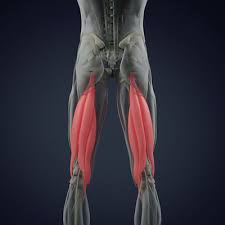Advanced DIgital Orthotics versus The Good Foot Store Orthotics
Advanced Digital Orthotics vs. The Good Foot Store Orthotics: Which Is Better?
Introduction
Orthotics are shoe inserts that are designed to support the feet and ankles. They can be used to treat a variety of conditions, including foot pain, heel pain, arch pain, and plantar fasciitis. Orthotics can also help to improve balance and stability, and reduce the risk of injuries.
There are two main types of orthotics: over-the-counter and custom-made. Over-the-counter orthotics are available at most drugstores and shoe stores. They are typically made from a variety of materials, including foam, gel, and plastic. Custom-made orthotics are created by a podiatrist or other healthcare professional to fit your specific feet. They are typically made from a more durable material, such as carbon fiber or plastic.
Two of the most popular brands of orthotics are Advanced Digital Orthotics and The Good Foot Store Orthotics. Both brands offer a variety of orthotics for different conditions and activity levels. However, there are some key differences between the two brands.
Advanced Digital Orthotics
Advanced Digital Orthotics are created using a digital scan of your feet. This allows for a more precise and accurate fit than traditional orthotics, which are made from a mold of your feet. Advanced Digital Orthotics are also made from high-quality materials, such as carbon fiber and plastic, which makes them more durable and effective.
The Good Foot Store Orthotics
The Good Foot Store Orthotics are prefabricated orthotics that are available in a variety of sizes. They are made from a variety of materials, including foam, gel, and plastic. The Good Foot Store Orthotics are less expensive than Advanced Digital Orthotics, but they are also not as durable or effective.
Comparison of the Two Brands
Here is a comparison of Advanced Digital Orthotics and The Good Foot Store Orthotics:
FactorAdvanced Digital OrthoticsThe Good Foot Store Orthotics
Fit Custom-made to fit your specific feet Prefabricated in a variety of sizes
Materials High-quality materials, such as carbon fiber and plastic Less expensive materials, such as foam and gel
Durability Very durable Less durable
Effectiveness Very effective Less effective
Cost More expensive Less expensive
drive_spreadsheetExport to SheetsBenefits of Advanced Digital Orthotics
Advanced Digital Orthotics offer a number of benefits over traditional orthotics, including:More precise and accurate fit: Advanced Digital Orthotics are created using a digital scan of your feet, which allows for a more precise and accurate fit than traditional orthotics.More durable: Advanced Digital Orthotics are made from high-quality materials, such as carbon fiber and plastic, which makes them more durable than traditional orthotics.More effective: Advanced Digital Orthotics are more effective at treating a variety of conditions, including foot pain, heel pain, arch pain, and plantar fasciitis.When to Choose Advanced Digital Orthotics
Advanced Digital Orthotics are a good choice for people who:Have severe foot pain or other foot conditionsNeed a precise and accurate fitNeed a durable orthoticAre willing to pay more for a higher quality orthoticWhen to Choose The Good Foot Store Orthotics
The Good Foot Store Orthotics are a good choice for people who:Have mild to moderate foot painAre looking for a less expensive orthoticDon't need a precise and accurate fitConclusion
Advanced Digital Orthotics are a better choice for people who have severe foot pain or other foot conditions and need a precise and accurate fit. The Good Foot Store Orthotics are a better choice for people who have mild to moderate foot pain and are looking for a less expensive orthotic.
Which brand is right for you depends on your individual needs and budget. If you are unsure which brand is right for you, talk to your podiatrist or other healthcare professional.
Additional Benefits of Advanced Digital Orthotics
In addition to the benefits listed above, Advanced Digital Orthotics also offer a number of other advantages over The Good Foot Store Orthotics, including:More comfortable: Advanced Digital Orthotics are designed to fit your feet perfectly, which makes them more comfortable to wear than The Good Foot Store Orthotics.More supportive: Advanced Digital Orthotics provide more support for your feet and ankles, which can help to reduce pain and improve balance and stability.More versatile: Advanced Digital Orthotics can be worn in a variety of shoes, including athletic shoes, dress shoes, and sandals. The Good Foot Store Orthotics are typically only designed to be worn in athletic shoes.More sustainable: Advanced Digital Orthotics are made from high-quality materials that are built to last.
posted by Dr. Craig Lowe. 714-785-1444 Cell @ 12:29 PM
0 Comments
![]()






















